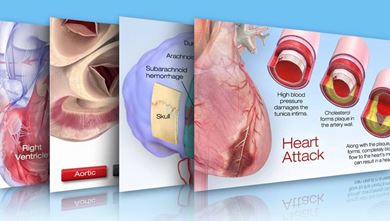Cardiac Computed Tomography Angiography (CCTA)
Quick Facts
- A CCTA scan uses X-rays to take images of your heart and blood vessels.
- The test helps look for narrowed arteries and blood vessels.
- The test might be used when other heart tests don’t provide enough details for a diagnosis.
What is a cardiac CT scan?
A cardiac CT angiography (CCTA) scan uses X-rays to take images of your heart and blood vessels. A computer combines the images to create a 3D image of your heart.
A CCTA scan is used to see narrowed arteries and blood vessels that supply blood to the heart or other parts of the body.
A multidetector CT (MDCT) is faster than a typical CCTA. It can produce better images with less radiation exposure.
Why do people need a CCTA scan?
You may need a CCTA scan when other tests don’t provide enough information about your heart.
The test can help your health care team gather more information on:
- Your heart’s structure
- How well your heart pumps blood
- Heart muscle scarring caused by a heart attack
- Fluid in the pericardial sac that covers the surface of the heart
- The amount of plaque buildup and narrowing of your coronary arteries
- Anything abnormal in the large blood vessels leaving the heart
- Your risk for a heart attack
Can it show if you have heart disease?
When contrast dye is injected during the CCTA scan, it can show blockages in your heart arteries. This helps see if chest discomfort (angina) is caused by a lack of blood flow to the heart due to blocked arteries. If the arteries are normal, your health care team can look into other causes of the chest pain.
With contrast dye, the CCTA scan can also check conditions including:
- If coronary artery bypass grafts are open after bypass surgery
- For congenital heart defects
- How your ventricles are working
Can I have a CCTA scan instead of a coronary angiogram?
A CCTA scan does not replace a coronary angiogram or cardiac catheterization. Coronary angiography is considered the best method for showing blockages in the coronary arteries. It also gives information about how your heart is working. In some cases, a CCTA may be done instead of a coronary angiogram. This is based on patient factors and the abilities of the hospital or outpatient center.
What are the risks?
A CCTA scan exposes you to radiation. Talk with your health care team about the safety and risks for any test you’re going to have.
Tell your health care team if you’re pregnant. If the test is not urgent, ask them about delaying it until after your pregnancy. Also, if you have kidney problems, your health care team may avoid using contrast dye. They should check your kidney function before the test.
Some people have allergic reactions to the contrast dye that’s used in the test. Before the test, tell your health care professional if you’re allergic to dyes. Depending on the reaction you had before, you may be given medications before the test to reduce the chance of an allergic reaction. In the case of a severe allergic reaction, contrast dye will not be used. Instead, a test that doesn’t require contrast may be used.
What happens after the CCTA scan?
- Your health care professional will let you know when to resume normal activities.
- After your health care team gets your test results, they will discuss them and next steps with you.







